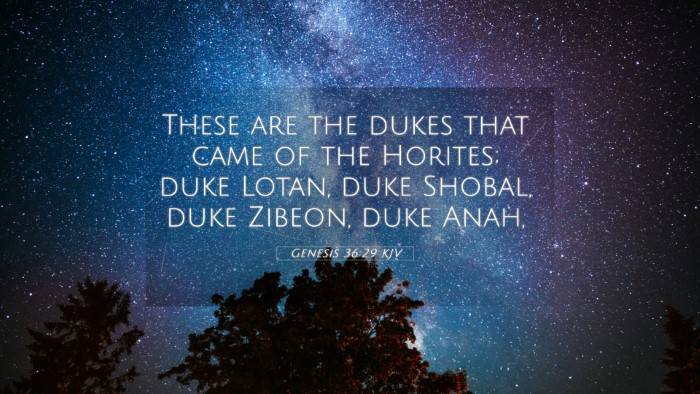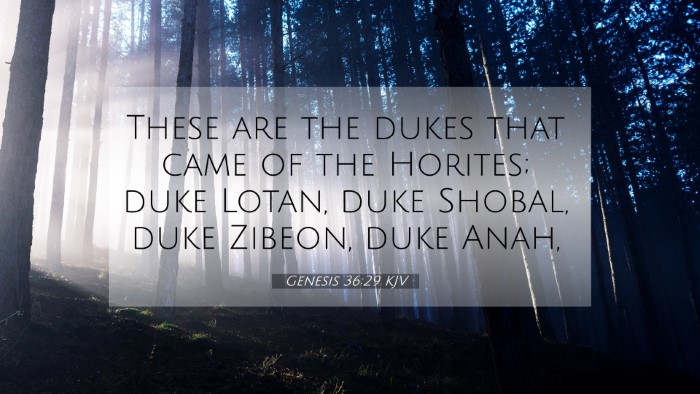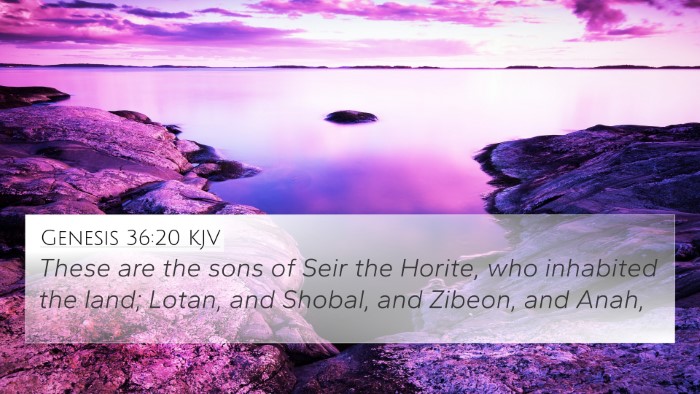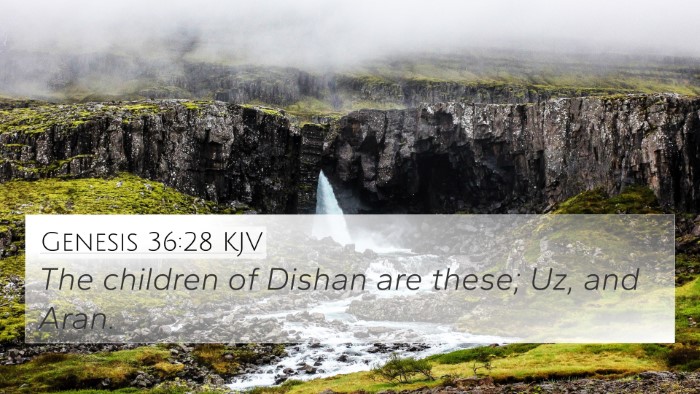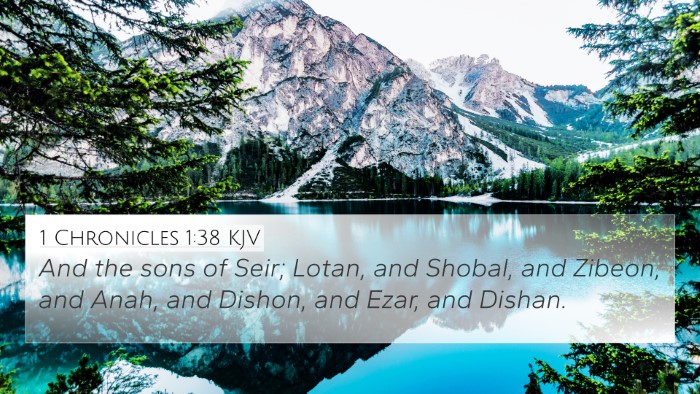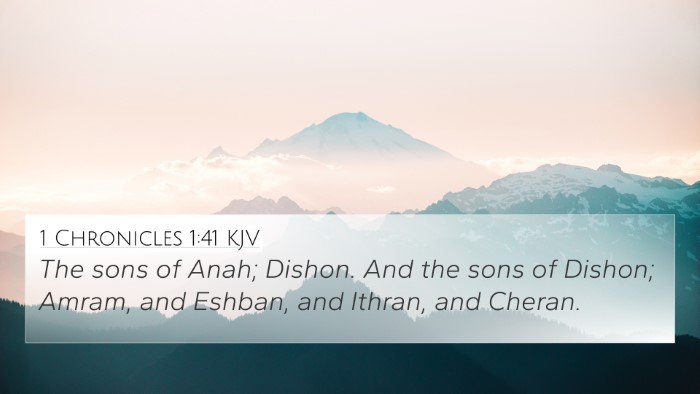Understanding Genesis 36:29
Genesis 36:29 states: "These are the chiefs of the sons of Esau. The sons of Eliphaz were Teman, Omar, Zepho, and Gatam, and Kenaz." This verse provides insight into the descendants of Esau, highlighting the lineage of the Edomites.
Commentary Insights
This specific passage serves to establish the genealogical connections and tribal leadership among Esau’s descendants. The identification of tribal chiefs is significant in understanding both the social structures of ancient societies and the prophetic implications concerning the descendants of Jacob and Esau.
Analysis from Public Domain Commentaries
-
Matthew Henry:
Henry emphasizes the importance of lineage in this context, as it reflects God's promise to Abraham regarding nations arising from his descendants. The tribal structure serves to remind readers of God's sovereignty in choosing and establishing leadership.
-
Albert Barnes:
Barnes highlights that the mention of chiefs signifies the fulfillment of earlier blessings and prophecies associated with Esau. Each name represents a tribe that has unique characteristics and contributions to the history of Edom.
-
Adam Clarke:
Clarke provides insights into the specific tribes mentioned, noting their importance in biblical history. He suggests that the characteristics of these tribes foreshadow their relationships with the Israelites as well as their own tribal cultures.
Bible Cross-References
To further understand this verse, here are some relevant Bible cross-references:
- Genesis 25:30 - Esau sells his birthright to Jacob.
- Genesis 27:36 - The account of Jacob and Esau's blessing.
- Genesis 36:1-8 - The broader context of Esau’s descendants.
- Deuteronomy 2:4-5 - Instructions concerning the land of the Edomites.
- Obadiah 1:10-14 - Prophecy concerning Edom’s downfall and its implications for Israel.
- Malachi 1:2-3 - God’s love for Jacob and hatred for Esau.
- Romans 9:13 - New Testament reference to the struggle between Jacob and Esau.
Thematic Connections
The mention of the chiefs in Genesis 36:29 presents an opportunity for exploring thematic Bible verse connections:
- Legacy and Identity: This verse connects to the broader theme of identity in lineage, as seen in 1 Chronicles 1:35-36, where the lineage of Esau is traced further.
- Tribal Leadership: The concept of tribal chiefs in Genesis resonates with leadership roles established in Exodus 18:21-22, where elders help guide the Israelite community.
- Divine Sovereignty: Key verses like Romans 9:11-12 discuss God's purpose in choosing Isaac over Ishmael and Jacob over Esau, highlighting divine selection.
- Conflict and Resolution: The tensions between Jacob and Esau can be studied further through the lenses of familial conflict seen in 1 Samuel 16:11-13, where God anoints a leader from outside the expected lineage.
Conclusion
The examination of Genesis 36:29 opens a window into the historical context, genealogical importance, and divine purposes linked to Esau and his descendants. Through cross-referencing these verses, we can gain a comprehensive understanding of the relationships and themes that permeate the biblical narrative.
Tools for Bible Cross-Referencing
For those interested in diving deeper, consider utilizing bible concordances and bible cross-reference guides that provide structure to your study, such as:
- Bible Reference Resources: Use comprehensive materials that categorize scriptures by theme, making it easier to find connections.
- Cross-Reference Systems: Adopt methods that facilitate cross-referencing like thematic indexing or verse parallels that help in comparative studies.
- Inter-Biblical Dialogue: Engage with texts that explore connections between the Old and New Testaments through detailed studies like the cross-referencing of the Psalms with New Testament teachings.
In studying Genesis 36:29 and its connections, believers can attain a richer, multi-dimensional understanding of scripture, reinforcing the idea of inter-Biblical dialogue and the significance of thematic connections within the Bible.

